Fall is here and we all know what that means: a new iPhone out on the market. With ten years of the iPhone closing in, many doubters thought Apple might be getting a little "boring." While the iPhone 7's design looks eerily similar to its two predecessors, there are enough changes here that make it the best iPhone to date.
When I preordered the iPhone 7 (matte black), I decided to experiment a little by going back to the iPhone 5s from my iPhone 6s. I used it for a couple of days and came to a few conclusions. While I like the one handed use and form factor, the 4-inch screen was too small for my liking. I really missed the 4.7-inch screen real estate used for reading and watching videos so when I got my iPhone 7 a week later, I knew it was the perfect size phone for me.
Headphone Jack
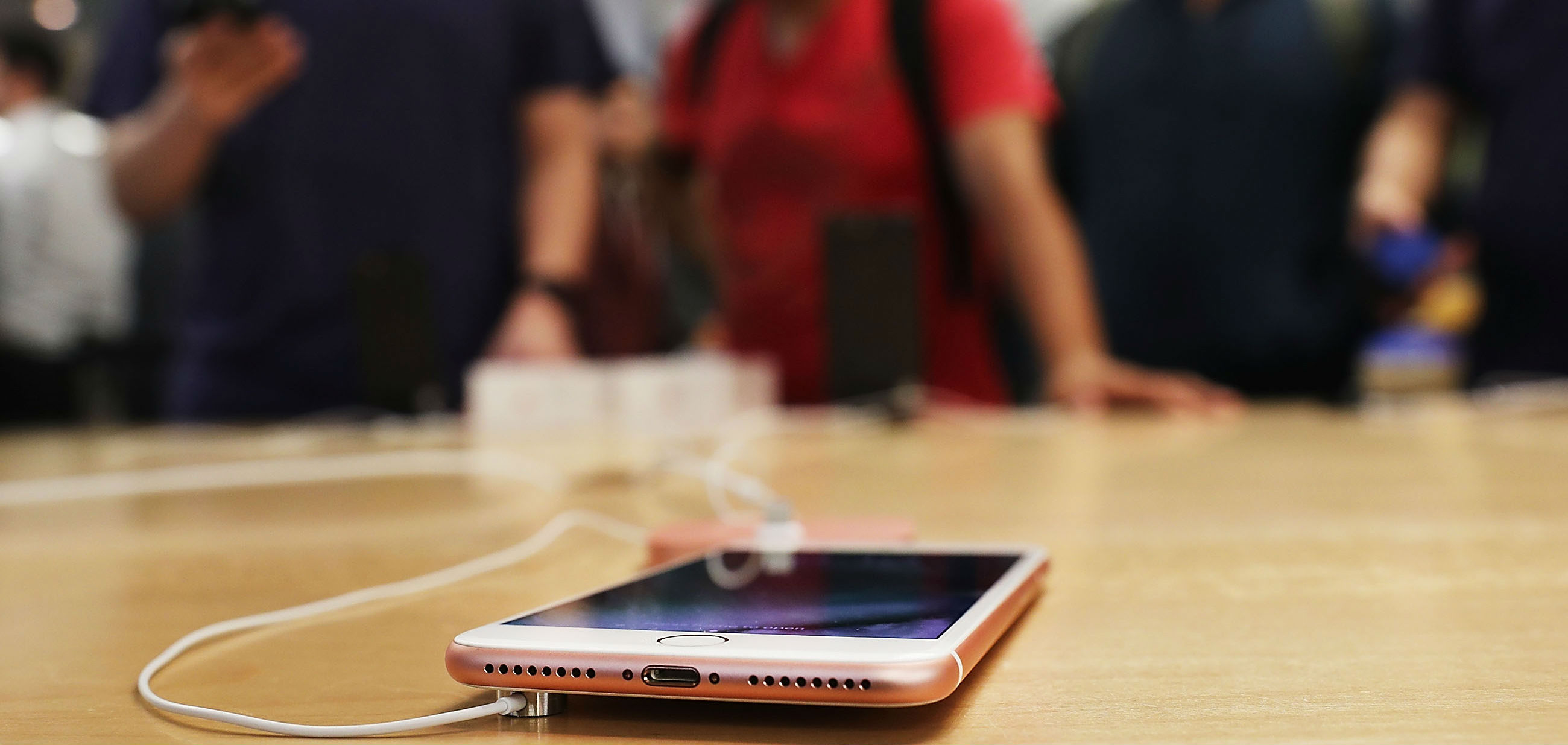
Image courtesy of Spencer Platt via Getty Images.
Let's cut straight to the point, the lack of headphone jack will be a deal breaker for some people. While Apple isn't the first company to remove the headphone jack from the mobile phone, they are getting pretty much all of the flack for doing so. With the headphone jack gone, Apple was able to move some components around and incorporate new things such as Optical Image Stabilization, stereo speaker, bigger battery, and even a second camera on the iPhone 7 Plus.
Apple has removed many things in the past, most notably the optical and floppy drive, FireWire, and ethernet ports, and often to much criticism. But as time often shows, people move on and forget about the things Apple took away from their devices.
One of the most common problems iPhone 7 users have is that they can't listen to music and charge their phone at the same time since the EarPods/adapter utilized the lightning port. To get around this, Belkin has a dongle ($39.99) that will let you do this or use Apple's Lightning Dock ($49). Not ideal—and it's still a problem—but there is a way around this.
I've had this phone for a week now and to be honest, I haven't missed the headphone all that much at all. Apple did it right by including lightning EarPods and a lightning to 3.5mm adapter for your existing headphones. The only real inconvenience I came across is that while using the lightning EarPods, I couldn't use them with my MacBook Pro since it didn't have a lightning port. The only workaround was to carry around 3.5mm EarPods (or your choice of headphones) and use the included adapter. Again—not ideal. But looking ahead a few years, this is something that will go away as more and more products ditch the analogue audio jack.
Design
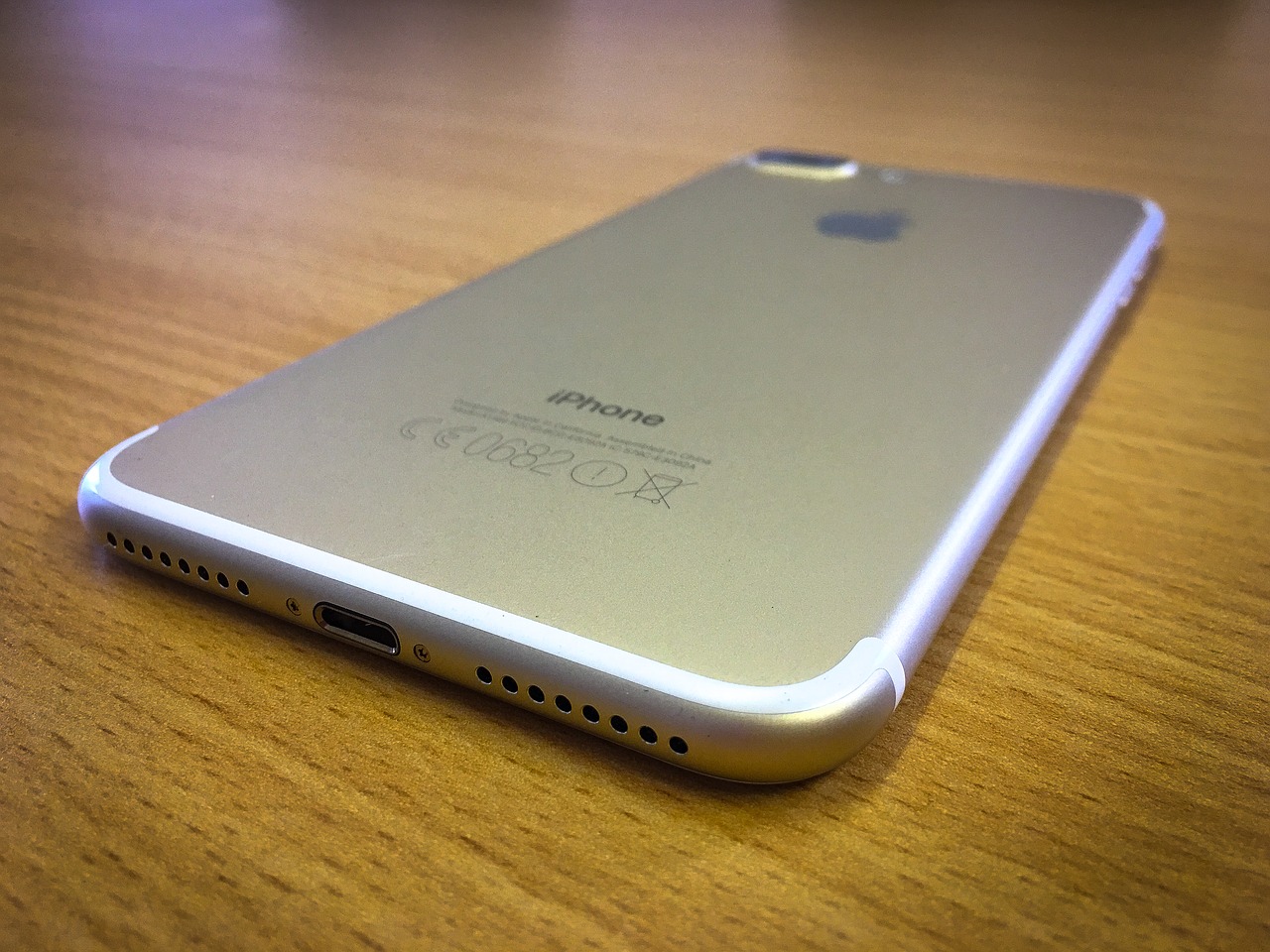
A quick glance will tell you that the iPhone 7's design doesn't look all that different from the previous two iterations. While the dimensions are the same, your old iPhone 6 and iPhone 6s cases won't fit because the camera lens are larger so it won't align with the cutouts on previous cases.
The antenna lines have been moved to the top and bottom of the phone so it looks a bit more hidden and streamlined. However, you can barely notice it especially on the matte black and jet black versions. Despite the disappointment that we'll have to wait until next year to get a true iPhone redesign, it's hard to fault Apple when its device looks this good and feels this good in the hand. The only real complaint here is with the "Jet Black" version, which has a glossy finish across the case and is a serious fingerprint magnet.
As much as we are all excited for what Apple does with the 10th anniversary iPhone next year, you most likely won't hear complaints from the average consumer, who all love their iPhones anyways.
Hardware

The iPhone 7 and 7 Plus both have the A10 Fusion chip that, according to speed tests, is faster even than the 9.7-inch iPad Pro. Even though the iPhone 6s was fast already, the iPhone 7 is noticeably faster especially when launching apps like Snapchat where you might be trying to capture a moment quickly.
The chip has four cores—two for high performance and two for efficiency saving you precious battery life. Speaking of battery life, Apple says the new iPhone 7 has one to two extra hours of battery but in my weeklong testing, it was closer to the one hour mark, which is still pretty crucial.
The display shows a wider range of colors to support the upgraded cameras but still has a 1334 × 750 pixel resolution, which is low compared to competitors like the Samsung Galaxy S7 (2560 × 1440 pixels). The wider color gamut looks better and increases the brightness by 25%.
The Taptic Engine exudes more haptic feedback throughout iOS, which I like a lot, when doing things like ticking an option on/off, pull down to refresh in some apps, scrolling through items like setting an alarm, etc. Apple is also including the APU for developers to take advantage of the Taptic Engine so they can incorporate taptic feedback in games and other apps.
Another new feature of the iPhone 7 are the speakers. The speakers are much louder now with an additional speaker on top, which utilizes the earpiece you use for phone calls. It is two times louder than the ones on the iPhone 6s and like the speakers on the iPad Pro, it senses when the phone is being viewed in landscape mode and adjusts the sound output accordingly. While playing music and podcasts through the speakers, the sound is noticeably louder, but it does not distort it in any way.
Home Button
Aside from the headphone jack, the new Home button was another talking point on the new iPhones. It is now a solid state button so it is essentially a stationary piece of glass and is no longer mechanical so it doesn't click like its older counterparts. This is to help improve water resistance because the home button is essentially not a button anymore and is less prone to break down and get flimsy over time.
The Taptic Engine vibrates every time you "press" on the button to give you feedback (you can adjust the settings to light, medium and firm). It kind of reminds me of the faux buttons on my old Nexus One screen where the buttons came up on the screen only when needed and it vibrated every time I pushed them. This along with the Raise to Wake feature, I believe Apple will remove the home button all together in the near future.
Water Resistance
One feature that is much welcomed to the new iPhone is water resistance. Apple touts the new iPhone 7 has a IP67 rating, which means it is dust resistance and will not breakdown to a depth of one meter for more than 30 minutes. So you can say goodbye to the days of putting your soaked iPhone in a bag of rice hoping it will turn on again the next day. While it is water resistant, I would not recommend taking it for a swim even in the shallow end and DO NOT expose it to salt water because it will start to eat away at the components.
Also note that Apple will not cover any iPhones that are water damaged even if you have AppleCare and wait up to five hours before charging a wet iPhone. However, you don't have to worry about taking your phone out in the rain, spilling a little water on it while at a restaurant, or even dropping it in the toilet. For this review, I ran some water over it in a sink and even took it in the shower with me to listen to a podcast and in both instances, it came out fine.
Camera
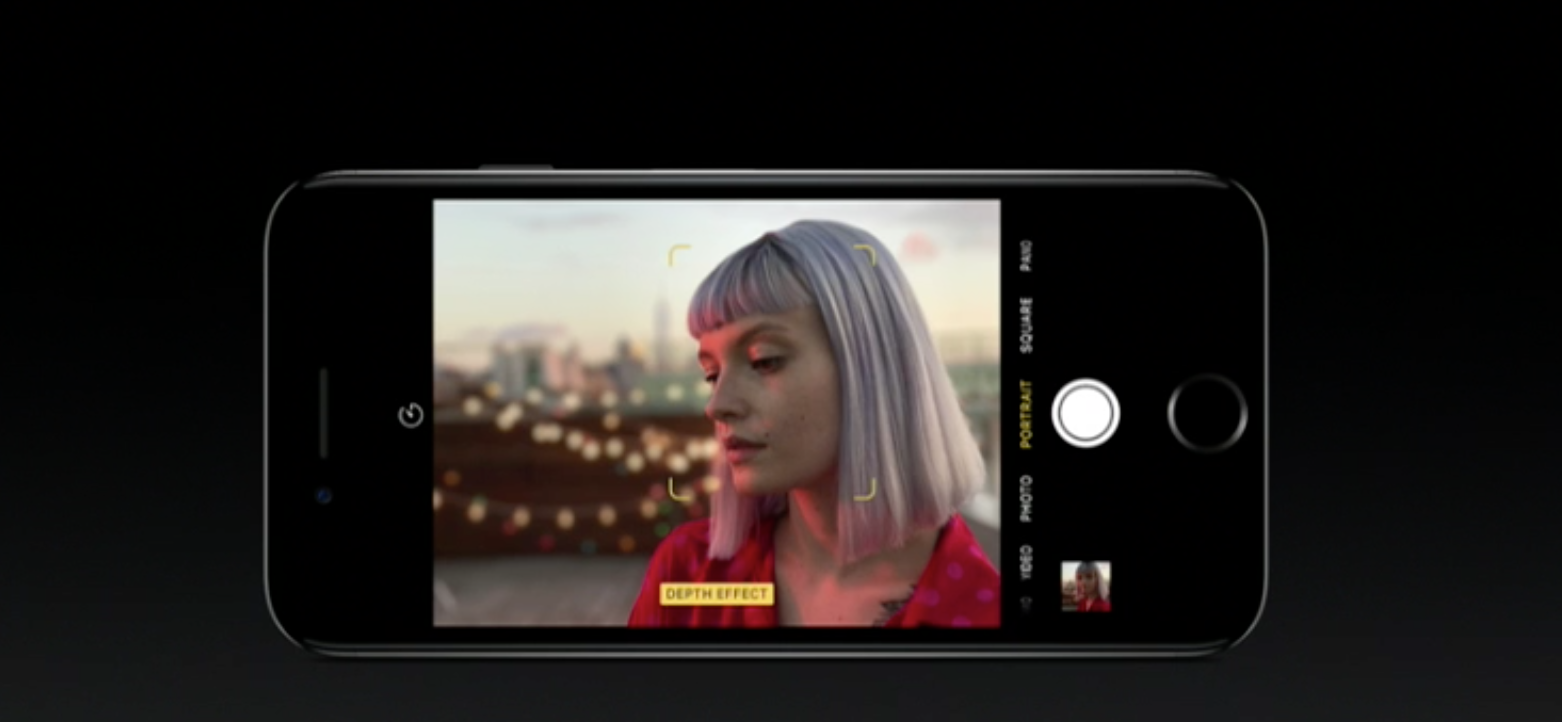
Both cameras on the iPhone 7 have been upgraded from the iPhone 6s. The rear camera is now a 12 megapixel camera with a larger f/1.8 aperture letting in more light. The front-facing camera is now a 7-megapixel camera, which is a much needed improvement considering how selfies are a huge thing nowadays. Along with that, it has a six element lens allowing it to capture a wider color range for more vibrant and detailed pictures and the smaller iPhone has optical image stabilization for still pictures and videos whereas it was reserved only for the larger iPhone 6s Plus in the past.
The True Tone flash has also been updated to four LEDs resulting in a 50% brighter and farther reaching flash. And yes, if you've seen the pictures, the "camera bump" is still there and it's even bigger than last year's model but Apple has built it into the bezel so it is more natural looking. When taking pictures especially night shots, more details show up than ever before.
Lastly, you also get a bokeh effect, built into the Camera app, as shown above. Just select "Portrait" and you'll see the camera grab onto a close subjective and blur the background.
And if you are lucky enough to get your hands on the iPhone 7 Plus, the dual cameras make it a dream for amateur (and even professional) photographers since it is the camera that people have with them at all times. With the 7 Plus, you get an optical zoom, which means you'll finally get a zoom that isn't terribly blurry.
But even with just the 7, you're still getting a significant camera update that pushes the iPhone back into that coveted number one spot for best smartphone camera. The Galaxy Note 7 and Galaxy S7 are still great cameras, but Apple's newest batches of cameras are hard to beat, especially in lowlight situations.
Software
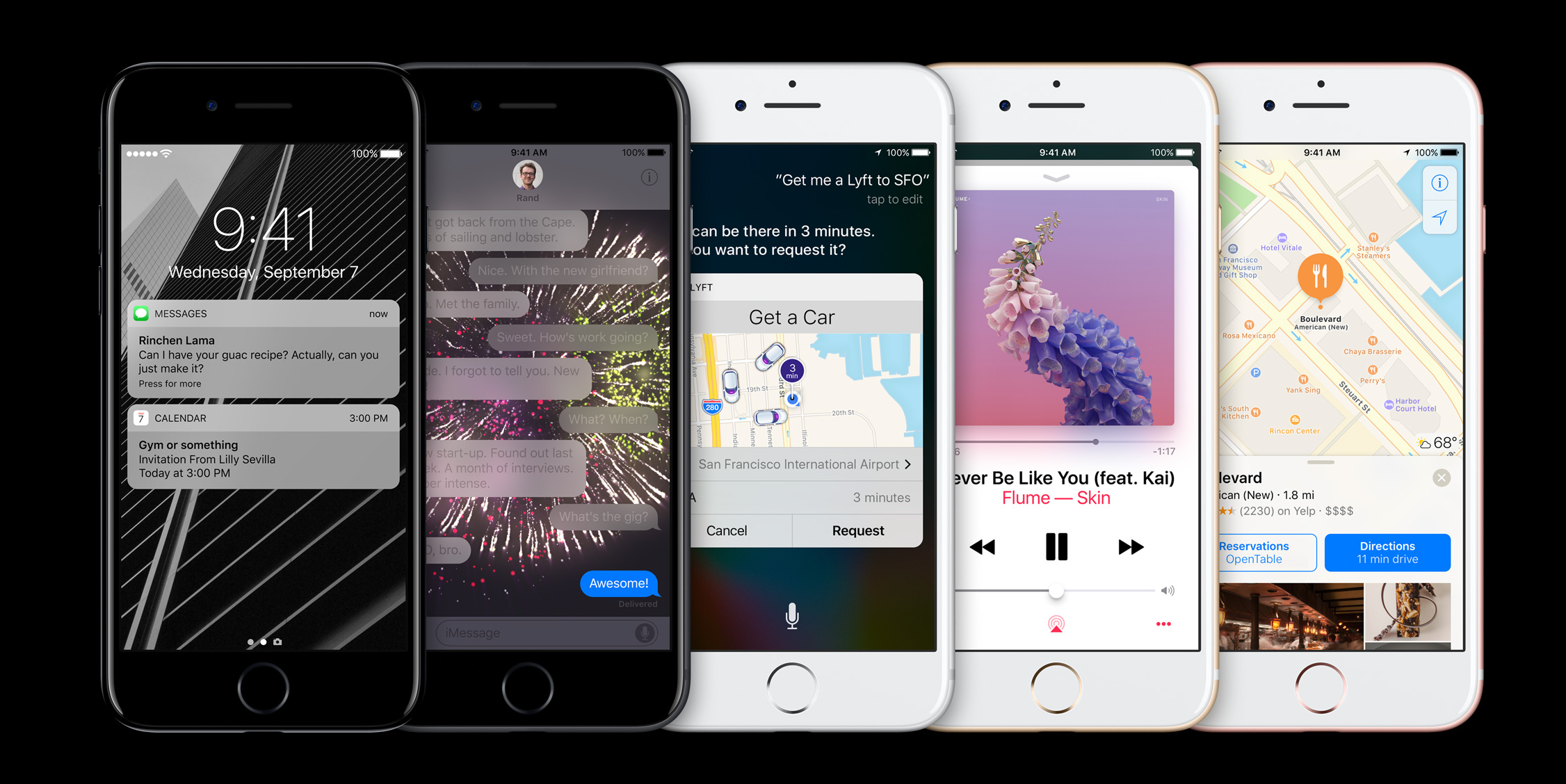
The design of the phone might not feel all that different, but iOS 10 makes some substantial changes to how your phone feels and functions. There aren't many iPhone-specific features, but that doesn't mean the overall smartphone experience still isn't one of the very best you can get. There are a ton of new features—and we won't get into all of them right now—but most of the basic apps got updates, including Maps, Photos, and Apple Music.
Control Center also got an update, along with notifications and how you interact with them. Apple still hasn't completely figured out notifications, but with each update they get better and better. The lock screen is where you'll notice more significant changes though. iOS now has widgets from third party apps, as well as shortcuts to your most used apps. It's all done in iOS's attractive clean style and Apple has done a good job of not letting all the information make your phone look to cluttered.
The biggest change though is to iMessage, which has gone from standard text messaging app to a Facebook Messenger competitor. There are all sorts of new ways to communicate, most of which are silly and fun. But helpful features like support for rich links and playable YouTube videos (without leaving the app), actually make iMessage feel like a legitimate messaging app.
Configurations
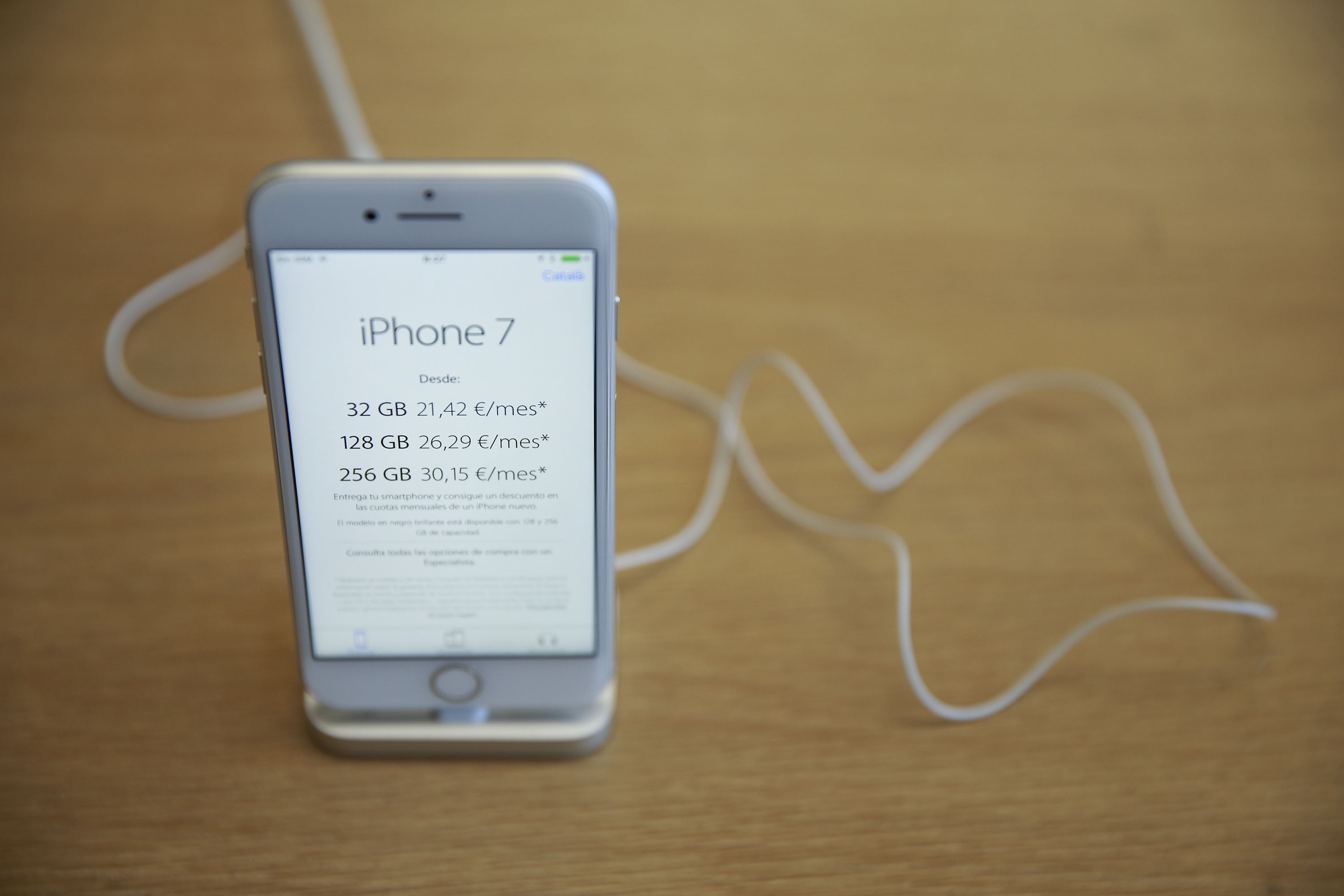
Image courtesy of Gonzalo Arroyo Moreno / Stringer via Getty Images.
The 16GB iPhone is now gone from existence! But I have some bad news for you, 32GB is the new 16GB. I opted for the 32GB version and while i have about 60 songs saved offline on Apple Music, no movies, most of my photos and videos backed up on Google Photos, I was left with about 8GB of free space. I tend to shoot a lot of video and if I wanted to shoot 4K, I wouldn't have that much space to do so.
With people taking more pictures and videos, I can see why even the 32GB model would be a problem with a lot of people. In fact, I am regretting not shelling out an extra $100 for the 128GB version. On a side note, one solution that I have been talking about for a while is that we need a way to clear caches from apps like Snapchat, Instagram, and Twitter where pictures and videos may take up more than a gig of space especially if you are following a lot of people and/or using the apps a lot.
While the increase in storage doesn't have an effect for the iPhone 7 (32GB; $649, 128GB; $749, 256GB; $849), there is a $20 increase for each model of the iPhone 7 Plus ($769, $869, $969).
Verdict
Like Apple says, the iPhone 7 and 7 Plus are the best iPhones out there right now. I was skeptical about the headphone jack at first and was dissuaded from even pre-ordering at first but I went through with it and am very glad I did so. Aside from the speed and performance, the camera upgrade especially the optical image stabilization was a huge welcome since it was reserved for the Plus models last year. I can see this being a huge hidden factor for the average user because you don't know how great it is until you re-watch the footage and see how smooth it is.
I will gladly give up the headphone jack in exchange for a better camera, battery life, and performance and I'm sure most iPhone 7 users will agree. If the headphone jack is that important to you, then you're in luck because the iPhone 6s and 6s Plus are still great phones. There is a wide range of iPhones out there that will suit everyone's needs, that's why Apple released the iPhone SE. There were a group of consumers who still loved the smaller 4-inch screen so instead of forcing them to get larger iPhones, they updated it so those people could enjoy better performance, cameras, etc.
If you have a 6s and are on the fence, don't do it unless you really want the new camera features. If it doesn't really matter, hold on to it. If you have a 6 or older and don't care about the headphone jack, then upgrade because you'll notice the improvements right away. The iPhone 7 probably won't convince Android users to switch over, but it will surely please the hordes of people who love their iPhones.
Source: iPhone 7 Review: Headphone Jack—I Hardly Missed You








